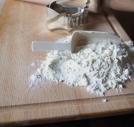Placing Pancreatic Cells Under The Skin May Treat Type 1 Diabetes
Treating type 1 diabetes might be something that gets under people’s skin, according to researchers at the University of Toronto (UT).
The UT study involved transplanting healthy pancreatic cells beneath people’s skin for insulin production, and blood glucose regulation.
“The skin has the advantage of being readily accessible,” said Michael Sefton, senior researcher and a professor in the Department of Chemical Engineering & Applied Chemistry. “It also presents fewer hazards than other transplantation sites.”
Insulin producing beta cells in the pancreatic islets are damaged in individuals with type 1 diabetes, and transplanting healthy cells may restore insulin function. However, knowing the best place to implant the cells is difficult. It’s impractical to deliver the new cells directly to the islets because islets are scattered throughout the pancreas between other types of cells.
Other implant sites, such as the liver and abdominal cavity are dangerous environments for newly transplanted cells, and likely to cause them damage. Also, the current method of implanting cells into the liver necessitates obtaining too many donor cells.
“You need to overshoot the quantity of islets when injecting into the liver because you lose about 60 per cent of the transplanted cells within the first 48 hours,” said Alexander Vlahos, lead author of the study and a PhD candidate. “That amount of islets requires two to three donors for each recipient.”
“The accessible location of the skin makes islet transplantation a lot more manageable, especially if the patient responds negatively to the donor cells,” adds Vlahos. “The space under the skin has a large area so that it can support many islets, which is necessary for this approach.”
After they injected healthy pancreatic islets under the skin, and if new blood vessels were created simultaneously, the researchers found that normal glucose levels could be recovered within three weeks. After the transplanted cells were removed, blood sugar readings went back to diabetic levels.
An adequate blood supply to the islets is vital for the transplantation to work. Though pancreatic islets make up only about one per cent of the pancreas, they utilize 15 to 20 percent of the organ’s blood flow.
“The next phase of our research will involve engineering the blood vessel network first and then injecting fewer islets into the already vascularized tissue,” said Sefton. “A well-vascularized environment will allow more of the cells to survive and function within the host, reducing the need for multiple donors per patient.”
Source: University of Toronto
Photo credit: Luke Ng / University of Toronto


































